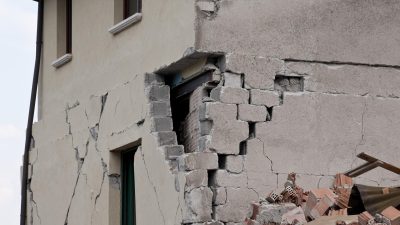The Deadly Storm That Exposed Japan’s Vulnerabilities And Changed Disaster Management Forever
1. Typhoon Ida: The Catastrophic Storm That Shook Japan to Its Core
Typhoon Ida, which struck Japan in 1958, remains one of the most destructive storms in the country’s history. The powerful typhoon wreaked havoc, leaving behind a trail of devastation that transformed entire communities. It claimed over 1,200 lives and injured thousands more. For Japan, the storm was a grim reminder of nature’s immense power, as the country faced the overwhelming task of rebuilding in the storm’s aftermath.
The impact of Typhoon Ida changed Japan’s approach to disaster management. It highlighted the gaps in infrastructure, particularly in storm shelters and flood control measures. The event set in motion improvements in preparedness and response systems, shaping the country’s future approach to such disasters. Despite the years of recovery, the devastation caused by Typhoon Ida remains a cautionary tale.
2. Typhoon Ida: Japan’s Tragedy That History Has Almost Forgotten
While Typhoon Ida’s catastrophic impact is an important chapter in Japan’s history, it often fades into the background compared to other recent natural disasters, such as the 2011 earthquake and tsunami. Many younger generations have little knowledge of Typhoon Ida’s full extent, despite it being a pivotal event. The storm affected not only coastal regions but also hit deep into Japan’s heartland, causing widespread destruction.
Though time has passed, the memories of Typhoon Ida serve as a crucial reminder of how even the most advanced nations can be caught off guard by nature’s fury. The event is often overshadowed by more recent disasters, but its significance in shaping Japan’s disaster preparedness should never be underestimated. Understanding the lessons learned from this tragedy is key to preventing future loss.
3. The Human Toll of Typhoon Ida: A Tragedy of Over 1,200 Deaths and Devastation
- 1,200 Lives Lost: Typhoon Ida’s death toll exceeded 1,200, marking it as one of the deadliest typhoons in Japan’s history. The storm was far more intense than originally anticipated, and it took many people by surprise, resulting in a higher number of casualties than expected.
- Thousands Injured: Along with the tragic loss of life, thousands were injured by flying debris, collapsing buildings, and floodwaters. Many of the injuries were severe, requiring immediate medical attention. Hospitals were overwhelmed, and the capacity to treat casualties was stretched thin.
- Massive Displacement: The storm left more than half a million people displaced. Entire communities were forced to evacuate, with many people seeking refuge in temporary shelters. The scale of the displacement added to the challenge of recovery, with many survivors left without homes or resources.
4. How Typhoon Ida Exposed Weaknesses in Japan’s Infrastructure and Preparedness
Japan’s infrastructure, which is known for being robust and advanced, was severely tested by Typhoon Ida. While certain elements of the infrastructure held up, the storm exposed significant vulnerabilities, particularly in flood control and evacuation procedures. Roads, bridges, and residential buildings were destroyed by the force of the typhoon, leaving the affected areas in disarray.
The flood protection systems, while in place, were overwhelmed by the sheer magnitude of the rainfall and flooding. The lack of sufficient shelters and emergency response measures only intensified the disaster. The damage prompted Japan to reevaluate its infrastructure and disaster response systems, leading to critical changes that have improved the country’s ability to handle future storms.
5. The Real Price of Typhoon Ida’s Destruction: Economic Loss and Societal Damage
The economic impact of Typhoon Ida was profound, with the storm causing billions of yen in damages. The destruction of vital infrastructure, such as roads and bridges, disrupted both local and national economies. Agriculture was hit hard, with floods ruining crops and leaving farmers facing a prolonged period of economic hardship.
The financial toll of the storm continued long after the winds had passed. Many businesses were forced to shut down or relocate, and the long recovery process left the nation grappling with significant losses. Typhoon Ida serves as a stark reminder of how natural disasters can not only cause immediate damage but also disrupt economies for years.
6. Government Response to Typhoon Ida: Was Japan Ready for Such a Catastrophe?
Many people questioned the effectiveness of Japan’s government in responding to Typhoon Ida. Despite knowing the storm was approaching, the government was slow to issue evacuation orders, and emergency response teams faced difficulties in reaching the most affected areas. This lack of prompt action contributed to the high death toll and widespread suffering in the aftermath of the storm.
The delay in response and insufficient preparedness revealed weaknesses in Japan’s disaster management at the time. These shortcomings sparked a national conversation about the need for better systems to handle such powerful natural events. In the years that followed, Japan focused on improving its response protocols and disaster planning, ensuring that future storms would be met with greater readiness.
7. The Mystery of Typhoon Ida: Were There Efforts to Downplay the True Impact?
- Casualty Reports Underestimated: There are accusations that the Japanese government downplayed the true number of deaths following Typhoon Ida. While official reports listed fewer fatalities, many survivors and witnesses claim the actual death toll was much higher, leading to suspicions that the government was attempting to minimise the disaster’s severity.
- Minimising Economic Impact: Another theory is that the economic damage caused by the storm was understated. Some believe the government tried to hide the true financial cost to avoid drawing international criticism and to maintain national morale.
- Control Over Media Coverage: It is also suggested that media outlets were instructed to limit their coverage of the disaster’s full extent. This would have been an attempt to control public perception and avoid panic, as the scale of the catastrophe may have overwhelmed the nation.
8. Typhoon Ida: Acts of Courage and Resilience Amidst Unimaginable Destruction
In the midst of Typhoon Ida’s chaos, stories of bravery and selflessness emerged from every corner of Japan. Many individuals put their lives at risk to help others, offering assistance in search and rescue operations or providing shelter to displaced families. Volunteers worked tirelessly to support the recovery effort, demonstrating the strength of community in the face of disaster.
Even though the destruction was severe, the resilience shown by Japan’s citizens helped the country rebuild. Survivors supported each other through the recovery process, showing the world that while storms can devastate, they cannot defeat the human spirit. The aftermath of Typhoon Ida was filled with stories of heroism, from those who helped save lives to those who rebuilt their communities.
9. Could Typhoon Ida’s Devastation Have Been Prevented? Questions That Still Linger
Could more have been done to prevent the scale of destruction caused by Typhoon Ida? Some experts argue that with better early warning systems and more advanced forecasting technology, the death toll could have been significantly reduced. Additionally, improved flood control infrastructure could have mitigated some of the worst flooding.
The question remains whether the extent of Typhoon Ida’s devastation was avoidable. While advancements in disaster preparedness have been made, this storm serves as a reminder of how unpredictable nature can be and how critical it is to continually improve systems for managing such catastrophes.
10. Conclusion: Typhoon Ida’s Legacy and What It Teaches Us Today
The legacy of Typhoon Ida continues to shape Japan’s disaster management strategies. While the devastation was overwhelming, the lessons learned from the event were instrumental in improving the country’s resilience to future natural disasters. Typhoon Ida highlighted the importance of early warning systems, better infrastructure, and coordinated response efforts in reducing the impact of such storms.
As Japan continues to adapt to the growing threat of natural disasters, the legacy of Typhoon Ida remains an important touchstone in the nation’s ongoing efforts to build a safer, more prepared society. The memory of the tragedy reminds us all of the need to be ready for whatever nature may throw our way.
5 Short FAQs
- What made Typhoon Ida so deadly?
The storm intensified rapidly, with strong winds and heavy rainfall that caught many by surprise, leading to a high death toll. - How many casualties did Typhoon Ida cause?
The storm resulted in over 1,200 deaths, with thousands more injured and displaced. - What economic damage did Typhoon Ida cause?
Typhoon Ida caused massive damage to infrastructure and agriculture, leading to significant financial losses for Japan. - Was the Japanese government’s response to Typhoon Ida sufficient?
Many believe the government’s response was slow, contributing to the scale of the disaster’s impact and the extended recovery period. - How did Typhoon Ida influence Japan’s disaster preparedness?
The storm led to reforms in disaster management, improving response times, infrastructure, and early warning systems to better prepare for future storms.
References:
Typhoon Ida (1958) – Wikipedia
JAPAN: Ida’s Price – TIME
Typhoon Ida (1958) – Alchetron
Typhoon Ida (1958) – Wikipedia Republished // WIKI 2
Typhoon Ida (1958) – DBpedia Association




